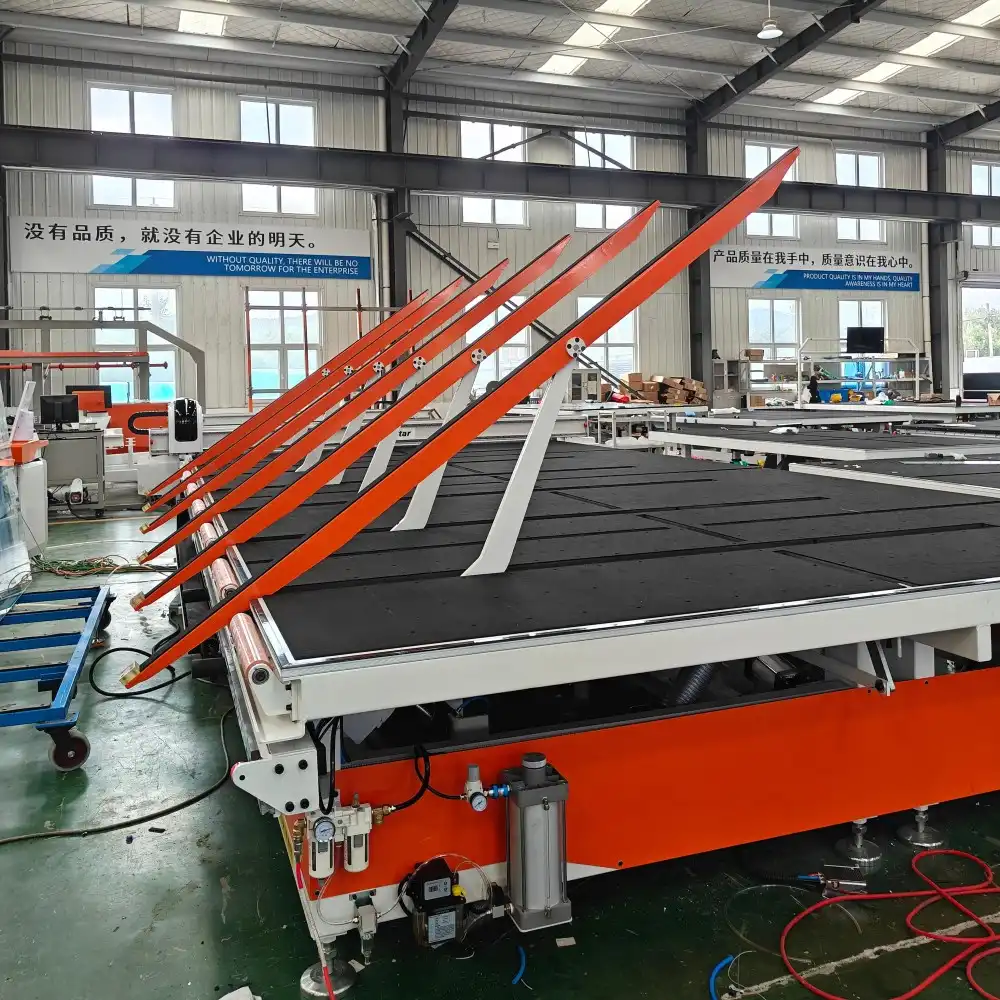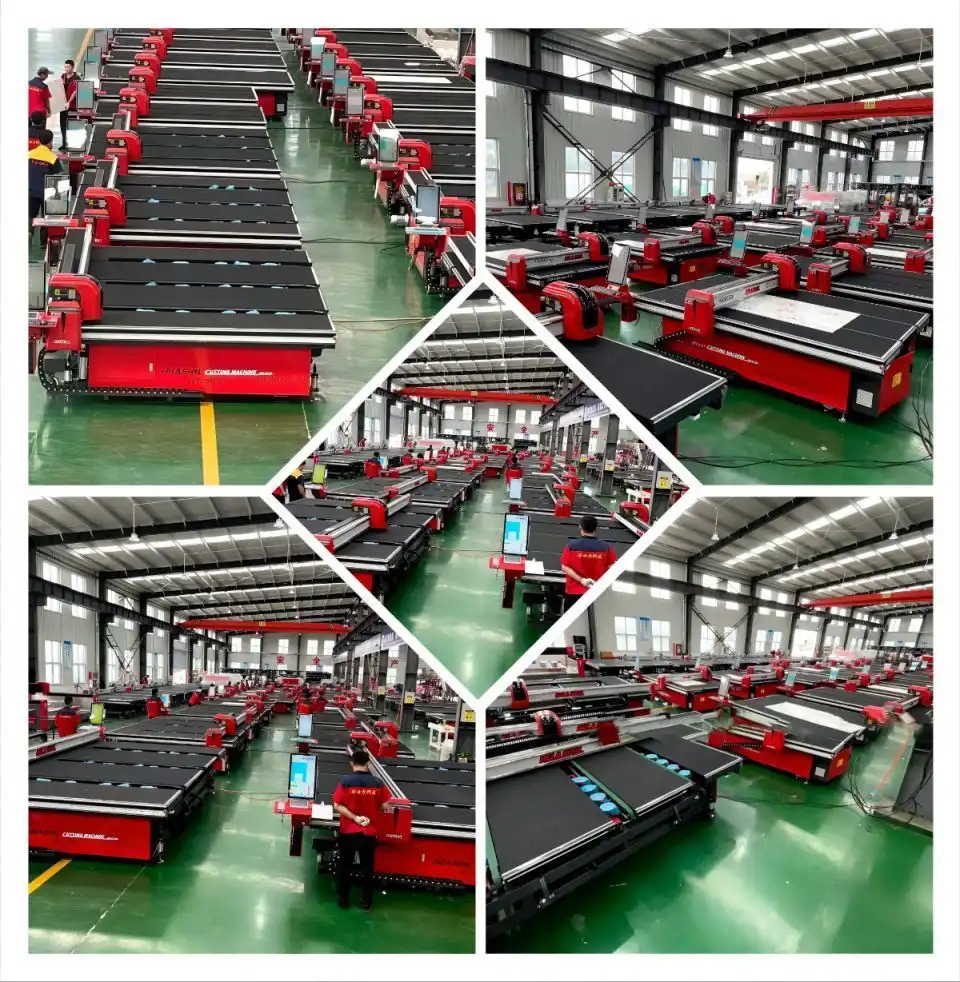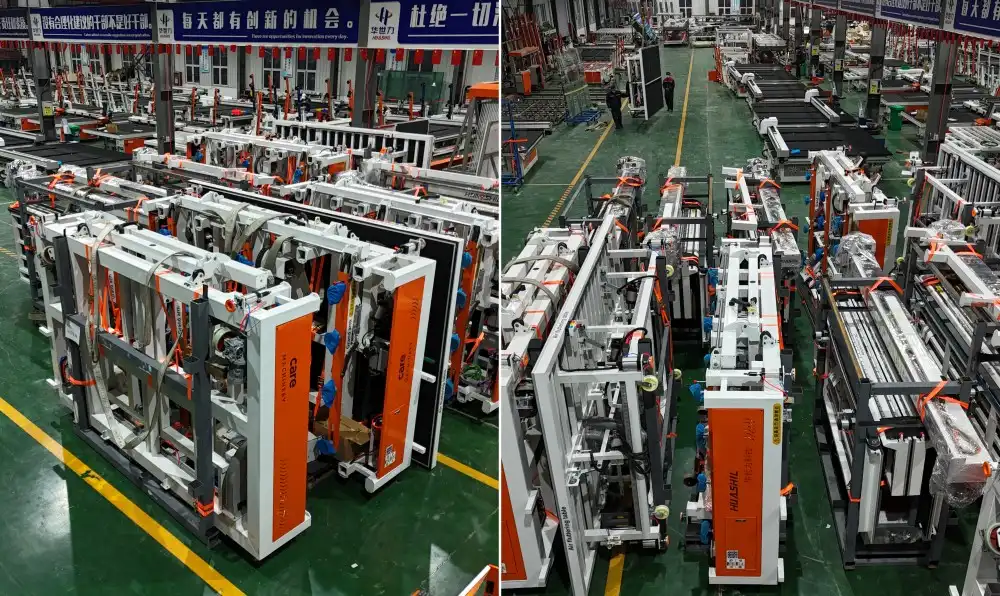In the world of glass manufacturing, safety is paramount. As technology advances, so does the commitment to protecting workers in this potentially hazardous industry. Glass cutting line machines have revolutionized not only the efficiency of production but also the safety standards within glass factories. This article delves into the various ways these cutting-edge machines are safeguarding workers while maintaining high productivity levels.
Automated Handling: Reducing Injury Risks
One of the most significant advancements in worker safety comes from the automation capabilities of modern glass cutting line machines. Glass cutting line machine made in China are designed to minimize direct human interaction with sharp glass edges and heavy sheets, drastically reducing the risk of cuts, lacerations, and musculoskeletal injuries.
Automated loading systems use vacuum lifts and conveyors to move glass sheets from storage to the cutting area. This eliminates the need for workers to manually lift and position heavy glass panels, preventing strain injuries and reducing the likelihood of dropped sheets.
During the cutting process, computer-controlled systems guide the glass through various stages with precision. Workers no longer need to physically manipulate the glass, keeping them at a safe distance from cutting tools and potential glass shards.
The integration of robotic arms for sorting and stacking cut glass pieces further minimizes human contact with freshly cut edges. These robots can handle glass of various sizes and weights tirelessly, maintaining consistent safety standards throughout long production runs.

Safety Features: From Sensors to Shields
Glass cutting line machines incorporate a multitude of safety features designed to protect workers from various hazards. These features work in tandem to create a comprehensive safety net around the cutting process.
Optical sensors and light curtains surround the machine's operational area. These detect any unauthorized entry into danger zones, immediately halting machine operations to prevent accidents. This technology ensures that workers cannot accidentally come into contact with moving parts or cutting tools while the machine is in operation.
Physical barriers and safety enclosures are integral components of modern glass cutting lines. These transparent shields allow for visual monitoring of the cutting process while providing a robust barrier against flying glass particles or debris. The enclosures are typically interlocked with the machine's control system, ensuring that the cutting process cannot start unless all safety barriers are securely in place.
Emergency stop buttons are strategically placed around the machine, allowing for immediate shutdown in case of any perceived danger. These large, easily accessible buttons empower workers to quickly respond to any unforeseen safety issues.
Advanced dust extraction systems are another crucial safety feature. These systems capture and remove glass particles generated during the cutting process, significantly reducing the risk of respiratory issues and eye injuries from airborne glass dust.
Many glass cutting line machines, particularly those produced by a China glass cutting line machine factory, also incorporate noise reduction technologies. By minimizing the decibel levels produced during operation, these machines help protect workers from long-term hearing damage, a common concern in industrial settings.
Training for the Future: Machine Safety Skills
While the machines themselves are designed with safety in mind, proper training is essential to maximize their protective capabilities. Modern glass cutting facilities invest heavily in comprehensive training programs to ensure workers can operate these sophisticated machines safely and effectively.
Initial training typically covers the basic operation of the glass cutting line machine, including startup procedures, normal operation, and shutdown protocols. Workers learn to interpret the machine's interface, understand warning signals, and respond appropriately to different scenarios.

Safety-specific training delves into the various protective features of the machine. Workers are taught how to verify that all safety systems are functioning correctly before beginning operations. They learn the importance of never bypassing safety features, even if it might seem to speed up production temporarily.
Maintenance training is another crucial aspect. Workers responsible for upkeep and repairs are instructed on safe practices when servicing the machine. This includes proper lockout/tagout procedures to ensure the machine cannot be accidentally activated during maintenance.
Many facilities also implement virtual reality (VR) training programs. These allow workers to practice operating the machine and responding to potential emergencies in a risk-free virtual environment. VR training can simulate various scenarios, from normal operations to rare but critical safety events, preparing workers for a wide range of situations.
Regular refresher courses ensure that workers' knowledge remains current, especially as software updates or new safety features are introduced. These ongoing training sessions also serve as opportunities to review any near-misses or safety concerns that may have arisen during regular operations.
Cross-training is becoming increasingly common in glass cutting facilities. By teaching workers to operate multiple stations along the cutting line, facilities increase their operational flexibility while also enhancing overall safety awareness among the workforce.
Some facilities are also incorporating ergonomics training into their safety programs. While glass cutting line machines reduce many physical risks, operators still need to maintain proper posture and body mechanics when interacting with control panels or performing any manual tasks associated with the cutting process.
Advanced training programs may include troubleshooting skills. By teaching workers to identify and resolve minor issues safely, facilities can reduce downtime and minimize the need for workers to place themselves in potentially hazardous situations while waiting for specialized technicians.
Many glass cutting line machine manufacturers offer specialized training programs or certifications. These manufacturer-specific courses ensure that workers are fully versed in the particular safety features and operational nuances of the exact models used in their facility.
Leadership training for supervisors and managers is another important aspect of a comprehensive safety program. These courses focus on creating a culture of safety, effectively communicating safety protocols, and leading by example in adherence to all safety procedures.
Some facilities are exploring the use of augmented reality (AR) for on-the-job training and support. AR systems can overlay safety information or operational guidance directly onto the worker's view of the machine, providing real-time assistance and reminders about safe practices.
Training programs often include sections on proper personal protective equipment (PPE) use. While glass cutting line machines significantly reduce risks, appropriate eye protection, gloves, and footwear are still essential when working in the vicinity of glass processing equipment.
Many training curricula now include modules on digital literacy and data interpretation. As glass cutting line machines become more integrated with broader factory management systems, workers need to understand how to read and respond to digital information related to machine performance and safety metrics.
Some advanced facilities are implementing predictive safety training. By analyzing data from the cutting line and historical safety records, these programs attempt to identify potential risk factors and provide targeted training to prevent future incidents.
Environmental safety is increasingly becoming part of standard training programs. Workers learn about the proper disposal of glass waste, the safe handling of any chemicals used in the cutting process, and the importance of maintaining a clean, organized work area to prevent accidents.

Crisis response training prepares workers for larger-scale emergencies. While the hope is that such training will never be needed, knowing how to respond to fires, natural disasters, or other major incidents can be crucial for worker safety in extreme situations.
Lastly, many training programs now include sections on mental health and stress management. Recognizing that a calm, focused worker is a safer worker, these modules help employees manage the psychological demands of operating complex machinery in a high-pressure production environment.
Conclusion
The integration of advanced safety features in glass cutting line machines represents a significant leap forward in worker protection within the glass manufacturing industry. From automated handling systems that reduce physical risks to comprehensive safety sensors and barriers, these machines are designed with worker well-being as a top priority. However, the true power of these safety innovations is only fully realized when combined with thorough, ongoing training programs that empower workers to operate these machines safely and effectively.
As technology continues to evolve, we can expect to see even more sophisticated safety features incorporated into glass cutting line machines. The future of glass manufacturing looks bright, not just in terms of productivity and quality, but also in its commitment to creating a safer work environment for all involved in the industry.
If you're looking to enhance the safety and efficiency of your glass manufacturing operations, consider investing in a state-of-the-art glass cutting line machine. At Shandong Huashil Automation Technology Co., LTD, we specialize in developing cutting-edge automated equipment that prioritizes both productivity and worker safety. With years of experience in R&D, manufacturing, and export, our advanced techniques and commitment to quality have made us a trusted name in the industry. Our machines are designed to meet the highest safety standards while delivering exceptional performance. To learn more about how our glass cutting line machines can transform your operations and protect your workforce, reach out to us at salescathy@sdhuashil.com. Let's work together to create a safer, more efficient future for glass manufacturing.
References
1. Johnson, M. (2022). "Advancements in Glass Cutting Technology: A Focus on Worker Safety." Journal of Industrial Automation, 45(3), 178-195.
2. Smith, A. & Brown, B. (2023). "The Impact of Automated Glass Cutting Systems on Workplace Injuries: A Five-Year Study." Occupational Safety Quarterly, 32(2), 87-102.
3. National Glass Association. (2023). "Best Practices for Safety in Modern Glass Fabrication Facilities." 4th Edition. NGA Publishing.
4. Lee, S., et al. (2022). "Virtual Reality Training Programs for Glass Cutting Machine Operators: Effectiveness and Implementation Strategies." International Journal of Industrial Ergonomics, 89, 103269.



